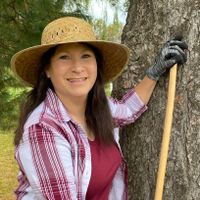Reasons For No Brussels Sprouts On Plants


Brussels sprouts are one of the healthiest superfoods gardeners can grow in the home garden. As a member of the cabbage family, Brussels sprouts are fairly easy to cultivate. Yet, gardeners sometimes find their Brussels sprouts not producing those miniature cabbage-like heads.
No Brussels Sprouts on my Plants
When faced with a gardening problem, sometimes it’s best to start by assessing the health of the plants. Brussels sprouts are prone to many of the same issues as other cabbage family members. Here are the most common pests and diseases that could affect the thriftiness and productivity of your plants:
- Fusarium wilt: The first sign of this fungal disease is a yellowing or browning of the lower leaves. Plant growth will be stunted and as the name suggests, the plants will wilt.
- Black leg: Recognized by black cankers on the stem, plants with black leg can be stunted or turn yellow and die.
- Black rot: Black veins and brownish, v-shaped areas starting at the edge of leaves are classic symptoms of black rot.
- Cabbage worms: Several species of cabbage worms chew holes in the leaves and tunnel through the heads of Brussels sprouts. These worms are not only very destructive, but they can be difficult to spot as they tend to blend in with the leaves.
If your plants appear healthy, full of leaves and pest-free, it's time to look further for the reason why your Brussels sprouts did not produce heads.
Brussels Sprouts Growing Requirements
One of the most common reasons for lack of head development on Brussels sprouts is improper growing conditions. Consider the following requirements for good Brussels sprout growth:
- Long growing season: Depending on the variety, Brussels sprouts need a minimum of 80 to 100 days for the golf-ball sized heads to grow. Choose a variety that is compatible with your growing season.
- Wrong growing season: Brussels sprouts are a cool-season crop which can tolerate below freezing temperatures. Southern gardeners can grow Brussels sprouts as a winter crop, while northern growers will find this crop does best with a fall harvest date.
- Bolting: Although this crop is frost-hardy, planting Brussels sprouts in early spring in colder climates might not give the plants sufficient time to mature before summer. To prevent bolting, plant Brussels sprouts soon after danger of frost.
- Loose, fluffy sprouts: When Brussels sprouts develop at temperatures over 70 degrees F. (21 C.), the heads often lack the desired firmness and flavor. To avoid this problem, use the days to maturity information on the seed packet to determine the optimal planting dates needed to achieve cool-weather bud development.
- Insufficient water: Although Brussels sprouts are tolerant of dry growing conditions, a consistent level of soil hydration aids in sprout development.
- Lack of nutrients: Like other members of the cabbage family, Brussels sprouts are heavy feeders. Plant this crop in compost-rich soil and fertilize periodically throughout the growing season. Consider having a soil test to determine if nitrogen levels are adequate.
- Competition: To reduce competition for nutrients, space Brussels sprouts plants 2 to 3 feet (.6-.9 m.) apart. Avoid growing Brussels sprouts near other heavy-feeders like cauliflower, broccoli or tomatoes.
Brussels Sprouts: Remove Leaves or Not
Perhaps, you've witnessed plants with their lower leaves removed and are wondering if this type of pruning affects Brussels sprout development. To answer this, let's first consider how Brussels sprouts develop.
These miniature cabbage-like heads form in the area between the main stem and the leaves. Development of sprouts occurs from the bottom of the plant upward. Naturally, plants with more leaves will produce a larger crop.
Removing Brussels sprouts leaves prematurely will reduce the plants ability to produce energy via photosynthesis and could affect bud development. However, once lower leaves begin to yellow, removing them won't hurt energy production. It will give sprouts more room to grow, improve air flow and lessen the chance of the plant bending as it grows heavy with sprouts.
Sign up for the Gardening Know How newsletter today and receive a free copy of our e-book "How to Grow Delicious Tomatoes".
Some gardeners also prune 2 to 3 inches (5-7.6 cm.) off the top of the plant about three weeks before harvest. This practice redirects energy into sprout development and encourages the buds along the stem to mature at the same time.

Laura Miller has been gardening all her life. Holding a degree in Biology, Nutrition, and Agriculture, Laura's area of expertise is vegetables, herbs, and all things edible. She lives in Ohio.